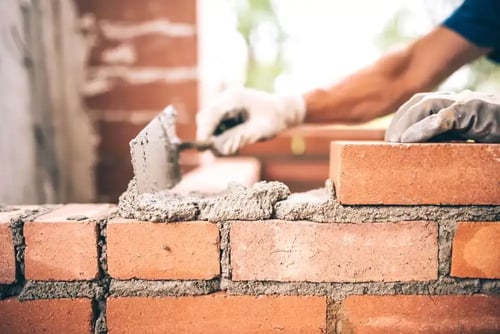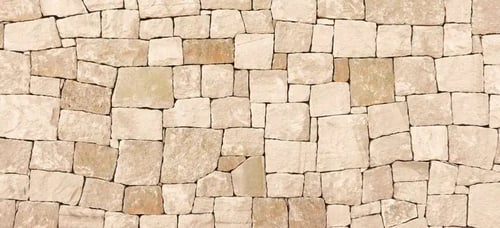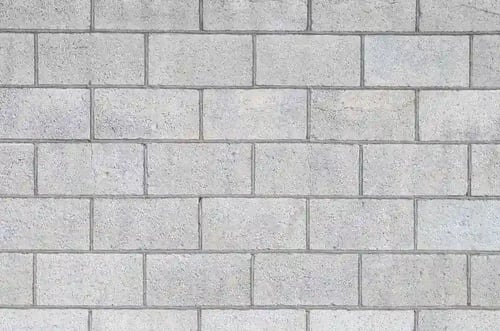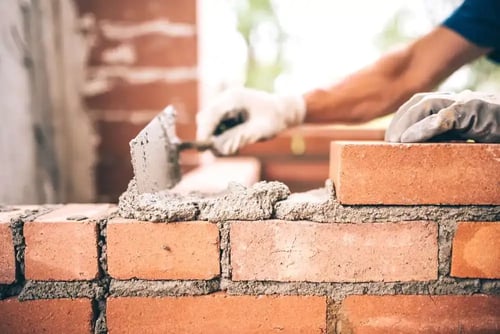What is masonry?
Masonry consists of building structures from single units that are laid and joined together with mortar. Brick, stone and concrete blocks are the most common materials used in masonry construction.
Masonry is a popular construction technique around the world due to its numerous advantages. However, as with any construction method, there are also limitations. This article summarizes the pros and cons of masonry construction.
Types of masonry construction:
Masonry

Pros : Masonry does not require highly skilled labor as the shape and size of the masonry units are uniform. Bricks are also light (lower permanent loads), easy to handle and transport and cheaper than stones and concrete blocks. Brick walls are thinner and units can be bonded together with different types of mortar depending on structural needs. Openings for doors and windows are easily made with bricks and costs are also reduced because the joints are thinner.
Cons : Bricks have low resistance to tension and torsional loads, which makes them more susceptible to seismic damage. Compared to stone and concrete blocks, bricks are also less resistant and durable, and limited in sizes and colors. Plastering is necessary as a finish, which increases construction costs.
Stone Masonry

Pros : Stone masonry is the most durable, strong and weather-resistant, thanks to the natural durability of the material. Stone is recommended for buildings with high pedestrian traffic as it does not bend or dent. One of the main advantages of stone is its aesthetic appearance, with a variety of colors, sizes and textures – the design possibilities are endless. Finally, stone masonry requires little maintenance and repairs, thanks to its durability.
Cons : The stone walls are thick and heavy, reducing space. It also has a high self-weight, combined with low flexural strength, tensile strength and seismic resistance. Stone masonry is time-consuming and requires skilled workers as it cannot be easily altered, repaired or relocated. When using stone masonry, careful installation will make the final structure safer for occupants.
Concrete Block Masonry

Pros: Concrete blocks are resistant to weather, pests, mold and fire. Transporting concrete blocks can be quite expensive, but this material can be found locally in most cases. Concrete blocks are available in various sizes, finishes and colors. These units can also be manufactured to meet any defined project requirements, and some concrete blocks are made from recycled materials. Furthermore, concrete blocks have good insulating properties against heat, sound and humidity.
Cons: Large concrete blocks are heavy and difficult to handle, requiring more labor. Concrete blocks also increase the amount of steel required in reinforced cement concrete structures. The price of concrete blocks may vary depending on the region, cost of cement and availability. Plumbing problems are more difficult to resolve when they occur in a concrete masonry structure, as they can cause internal flooding. In this case, the concrete blocks must be cut, leading to wasted material and costly repairs. An effective drainage system is very important when it comes to concrete block masonry.
Reduce material and labor costs with professional design and project management services.
Advantages of Masonry Construction
These general advantages apply to all types of masonry units (brick, stone or concrete blocks):
- Masonry is non-combustible, which improves the fire protection of the building and its occupants. Fireplaces are commonly made from masonry for the same reason.
- Masonry offers high resistance against rot, pests, weather and natural disasters such as hurricanes and tornadoes.
- Masonry structures provide an attractive, rustic or elegant look to a home or building, depending on the material used and the experience of the workers.
- Being durable and resistant, the mansion can withstand large amounts of compressive weight loads.
- Masonry units increase the thermal mass of a building.
- Masonry buildings have a longer lifespan than any other type of construction.
- Using masonry in your construction improves your resale value.
- Masonry does not rot and insects such as ants and termites cannot destroy its structure.
- Using this method in construction costs less in terms of labor and materials compared to using wood.
Disadvantages of masonry construction
- Masonry construction involves heavy materials such as bricks, stones and concrete blocks. These cannot be transported in conventional vehicles and, in some cases, must be ordered from special catalogs, especially stones.
- The stability of masonry structures depends entirely on their foundation. If any foundation settlement occurs, cracks are likely and must be repaired to prevent moisture infiltration and damage.
- Masonry activities cannot be carried out during heavy rain or freezing conditions as the mortar will be severely affected.
- Masonry construction requires a lot of time and proper project planning. Depending on the type or masonry, specialized labor may be required.
Which type of masonry structure is best?
When selecting the ideal masonry structure, there is not just one that works best – it depends on a series of variables.
– The objective of the structure
- Budget
– Local Climate
Nowadays, masonry structures are commonly used in foundations, building walls and other construction projects because they are easy to use in the construction industry.
Adding some examples of masonry structures, which are made from individual building blocks such as stones, bricks and cinder blocks. Some popular types are:
- Brick Masonry: Offers aesthetically pleasing options and at the same time the blocks are uniform and resistant, used for both internal and external purposes.
- Stone Masonry: It is imposing and durable and is composed of natural stones, e.g.: Granite or Limestone. Stone masonry is very strong and weight is the factor in the design of this masonry.
- Concrete masonry: This is one of the economical options and is constructed using precast concrete blocks. Concrete masonry is used in the market because it can be molded into different shapes and sizes, which is suitable for all needs such as walls, foundations and even decorative purposes.
- Veneered masonry: Masonry is mainly used for aesthetic appeal purposes but is not at all suitable for leaded walls as this technique uses thin layers of bricks or stones.
Final thoughts-
The construction industry has introduced various construction methods. These techniques have undergone several improvements, which have paved the way for greater durability and minimization of maintenance efforts. One of the most popular construction methods used in the construction of homes and tall, heavy buildings is masonry.
Masonry has its pros and cons, as discussed above. In this method, you will need a professional team committed to bringing your plans to fruition. Masonry work involves time, thorough planning and discussion. Although it has its own disadvantages, it is still considered the most reliable and durable construction method.

